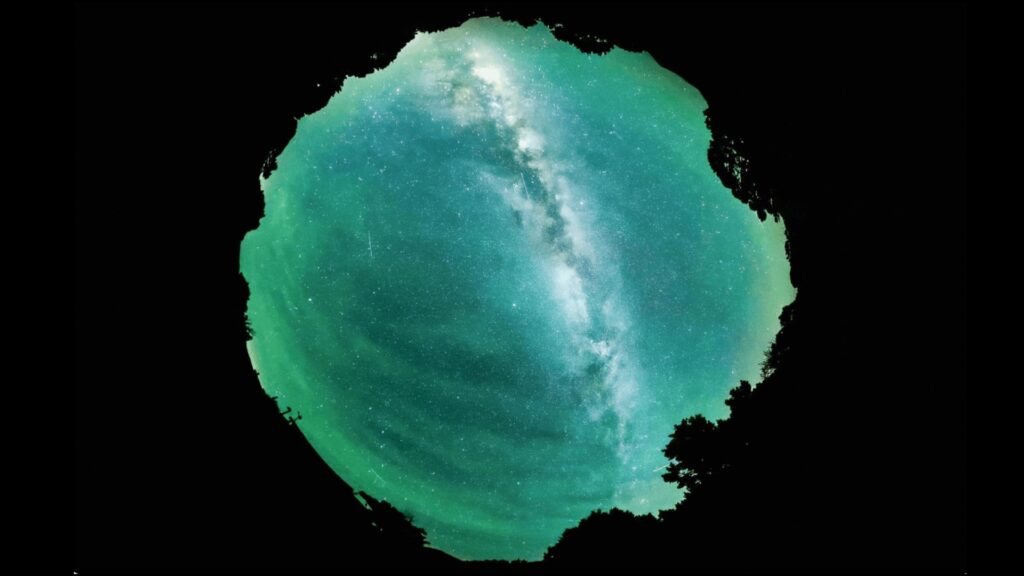We’ve always had a fascination with the stars, bright beacons of light that come alive when the sky darkens. They’ve been revered as gods, used to mark changes in the seasons, and as a way to navigate the globe. It’s difficult to trace back when exactly people started looking up and taking note of familiar patterns that were formed by these points of light, but some propose that 17,000-year-old cave paintings in Lascaux, France, depict the constellations we today know as Taurus and Orion.
Ancient cultures across the world saw these patterns in different ways, often linking them to legends that were told among their people or the local fauna and flora, or creating new myths from the shapes they saw. The constellations that make up the Zodiac — the stars that follow the ecliptic — are some of the oldest recorded, and remain essentially the same today as ancient Babylonian astronomers recorded them in the 6th century B.C.
All About Space

This article is brought to you by All About Space.
All About Space magazine takes you on an awe-inspiring journey through our solar system and beyond, from the amazing technology and spacecraft that enables humanity to venture into orbit, to the complexities of space science.
Although there are older records from many different places and cultures that tell their own stories, it is the ancient Greeks that made a lasting impact on astronomy. Claudius Ptolemy, a Greek astronomer who lived in the city of Alexandria in the 2nd century A.D., made a comprehensive list of 1,022 stars, illustrating them as members of 48 constellations, many of which adopted imagery from Greek myths and legends and older Babylonian ideas. This ancient text, called Almagest, became the basis of what we recognize in the sky today.
About 800 years after Ptolemy recorded his knowledge of the heavens, a Persian astronomer, Abd al-Rahman al-Sufi, translated his Greek into Arabic, bringing his stellar stories to another part of the globe. As Ptolemy had never named the individual stars in his work, al-Sufi incorporated Arabic names. His observations were so advanced that his work, the “Book of Fixed Stars,” traveled across Europe, his star names being accepted along with the constellations they were woven into.
After the invention of the telescope, more and more stars were discovered and named, with many different influences. To avoid confusion, in 1922 a group of astronomers from around the world decided it was time to properly map the stars, putting official boundaries between the constellations to make it easier to navigate the sky and locate specific objects. Now divided into 88 official constellations, drawing heavily from Ptolemy and al-Sufi’s works, next time you gaze up at them, think about the many stories that have been told about each one across the ages.

What did other cultures see in the stars?
Today we know of trillions of stars, and even other galaxies. We have classifications for different stellar types, and can work out a star’s mass, density and composition from many light-years away. We know that stars are dense balls of gas that are fusing hydrogen to power themselves, creating light as they do. But before the modern age of science, people could only guess at what these bright lights in the night were. Here are some of the oldest interpretations, and what the stars meant to these ancient observers.
Scorpion or fishhook?

Part of the Zodiac, this constellation is officially dubbed Scorpius, the Scorpion. But for hundreds of years Polynesians have seen its inverted tail as a fishhook—one belonging to a demigod of legend: Maui. Maui possessed a magical fishhook, Manaiakalani, which could catch anything. He and his brothers set out to sea, where Maui cast his line. Tricking them into thinking he had caught a giant fish, Maui got his brothers to paddle the canoe as fast as they could to reel in his line, pulling up islands from the sea for humans to live on.
Sirius, the Nile Star

Sirius was very important to the ancient Egyptians. Each year in mid-August, it would be the first bright star to rise in the predawn sky, known as a heliacal rising. The timing coincided with the annual flooding of the River Nile, alerting people who lived near its banks that it was time to move inland to safety. A second calendar was created to measure the time until its return. They knew the star as Sopdet, the personification of a goddess associated with the fertility that the flooding brought to the land.
Maya star tracking

Mayans were keen astronomers, tracking the sun, moon, planets, and Milky Way across the heavens, and constructing incredibly accurate calendars for the time using their knowledge. They built many structures and buildings to align with certain stars, and there’s evidence they had a 13-star Zodiac that took the shapes of the native wildlife. Polaris was also known to the Maya, though they knew it as Xaman Ek. It was sometimes associated with the rain god who brought the storms of winter.
The four symbols

Ancient Chinese astronomers charted the night sky into four regions, each of which was assigned one of the Four Symbols: the Azure Dragon of the East, a dragon god; the Black Tortoise of the North, who symbolized longevity; the White Tiger of the West, the king of beasts; and the Vermillion Bird of the South, an elegant fire-red bird. Seven constellations — or “mansions” — within each of these symbols were used as a way to follow the moon’s motion across the sky, forming an early lunar calendar.
How the ancient Greeks wove lasting legends into the sky

Though some constellations were borrowed from the Babylonians — brought to Greece by Eudoxus of Cnidus in the 4th century B.C. — ancient Greek scholars considered astronomy to be a mathematic art, a way to use geometry to predict the motion of the heavens.
Many ancient Greek scholars mapped and wrote about the stars and their motions, but the most well known today is Ptolemy’s book Almagest. In it he identified the 12 constellations of the Zodiac, 21 to the north of the ecliptic and 15 to the south, naming them after heroes and beasts from famous poems and myths, whose deeds had allowed them to be made immortal among the stars and revered as semi-divine spirits.
Ursa Major (The Great Bear)

Containing one of the most famous asterisms in the sky and pointing the way to Polaris, Ursa Major had been seen as a bear by many primitive cultures before the ancient Greeks. To the Greeks the bear was Callisto. Zeus had an affair with the huntress, which bore a son. When Zeus’ wife found out, she was so enraged that she turned Callisto into a bear. Zeus later placed her in the stars to keep her safe. Callisto is also the namesake of one of Jupiter’s moons.
Pisces (The Fishes)

An equatorial constellation, Pisces forms the shape of two fish connected by a rope of stars. In an effort to escape a monster that had been sent to attack Mount Olympus — the home of the gods — the goddess of love, Aphrodite, and her son, Eros, transformed themselves into fish in order to flee into the Euphrates River. They tied their tails together with a cord so that they would not lose one another. Its brightest star was originally given the name Kullat Nunu, meaning “the cord of the fish” due to its place in the constellation.
Orion (The Hunter)

Visible in the Northern Hemisphere in the winter months, and easily recognized by his famous belt of three bright stars, Orion, the Hunter, has been identified in many cultures over thousands of years as a hunter, shepherd, or warrior.
In Greek mythology he was the demigod son of Poseidon, and an accomplished hunter. He proudly boasted to the goddess Artemis that he could hunt and kill any creature if he wanted to. This made Gaia, the earth goddess, angry, and she sent a giant scorpion to kill him as punishment for his pride. Orion and Scorpius were both placed in the sky as a warning against arrogance and upsetting Gaia — though on opposite sides of the sky so that they could avoid each other.
Hercules (The Hero)

Also known as Heracles, and a true icon in ancient Greek mythology, Hercules was perhaps the best-known hero in the stories of old, with tales of his deeds spreading to ancient Rome.
A demigod with incredible strength, Hercules was assigned 12 seemingly impossible tasks to atone for a crime he had committed. He used his power, courage, and skill to complete all 12 tasks, and was immortalized in the stars as a prize. Many of Hercules’ conquests have also been placed among the stars, such as Leo, a fierce lion; Draco, a great dragon; and the Hydra, a sea monster. This constellation is also known for hosting the stunning Great Globular Cluster, Messier 13.
A whole cast of stars

In Greek mythology, Cepheus and Cassiopeia were the king and queen of ancient Ethiopia — now they are the King and Queen in our stars. They had a beautiful daughter, Andromeda. Cassiopeia was incredibly vain, and boasted of her daughter’s beauty, telling people she was lovelier than even the Nereids, sea nymphs whose beauty was renowned. This vanity angered the Nereids, who complained to the sea god Poseidon about the vain queen’s words. To punish the queen for her arrogance, Poseidon sent floods and a sea monster, Cetus— though this constellation is often called the Whale in astronomy—to terrorize the coast of Ethiopia.
Wanting to appease the gods and end Poseidon’s wrath, the king and queen were told that they must sacrifice their daughter to the sea monster. They chained the beautiful maiden to a rock to await her fate — hence why the constellation of Andromeda is often called “the Chained Maiden” in modern times. As luck would have it, the great hero Perseus was flying back over Ethiopia on his winged horse, Pegasus, after slaying the Gorgon Medusa. Falling in love at first sight with the beautiful damsel in distress below, Perseus saved her from her doom using the severed head of Medusa as a weapon, and took Andromeda as his bride. All of these characters have been placed into the stars, with the majority of them grouped together in a section of sky in the Northern Hemisphere, while Cetus lurks further south.
When the stars were later given names by al-Sufi, the variable star Beta Persei was named Algol, meaning the Demon’s Head. It is said to depict the eye of the severed head of Medusa in the constellation of Perseus— although gazing up at this particular star won’t turn you to stone.
How the Age of Exploration discovered new constellations

The majority of the ancient constellations lie in the Northern Hemisphere, because that is what the ancient cultures that mapped them could see from their positions on Earth. When European explorers began to sail further south to investigate new parts of the sea for potential trade routes in the 1600s, they found that the star maps they used for navigation were lacking the further they went. They soon realized that the skies below the equator contained uncharted stars that formed new patterns above them.
Astronomers set out to map the entirety of the sky, classifying these newfound stars into constellations. Some of these built upon the legends of the northern constellations, while others were based on tools that helped in astronomy and navigation, or exciting new animals that had been discovered as new continents were conquered.
Vulpecula (The Little Fox)

Sitting in the sky in the middle of the Summer Triangle, Vulpecula, Latin for “little fox,” was originally envisioned as a fox with a goose clamped in its jaws by Johannes Hevelius, with him dubbing it Vulpecula et Anser — the little fox and the goose.
Though Hevelius didn’t see these two animals as separate constellations, the stars were later divided as such. Since then they have been merged into one constellation again, though the goose is remembered in the name of Vulpecula’s brightest star, called Anser.
Triangulum Australe (The Southern Triangle)

Not to be confused with its northern counterpart Triangulum, the Southern Triangle moved around the sky a little before it ended up where we find it today. The earliest depiction was by Dutch astronomer Petrus Plancius in 1589 on a celestial globe, though he incorrectly placed the tiny triangle to the south of the much larger constellation of Argo Navis.
Plancius also originally listed the constellation as Triangulus Antarcticus. The German astronomer Johann Bayer later correctly depicted the constellation in his star atlas Uranometria in 1603, where it was given its current name of Triangulum Australe.
Scutum (The Shield)

A long, narrow diamond of stars lying close to the ecliptic, Scutum was first classified by Polish astronomer Johannes Hevelius in 1684. He originally named it Scutum Sobiescianum — Shield of Sobieski — after King John III Sobieski to commemorate his victory in the 1683 Battle of Vienna.
The king is also said to have helped Hevelius rebuild his observatory after a terrible fire almost destroyed it in 1679. The name was later shortened, like so many names of constellations have been over the years, to make it easier to reference. Scutum depicts a specific type of curved, oblong-shaped shield that was used in ancient Rome.
Columba (The Dove)

A small winter constellation in the Southern Hemisphere, Columba, the Dove, was first depicted on a planisphere by Petrus Plancius in 1592, where he listed the stars as Columba Noachi — Noah’s Dove. Not the only constellation to be named after a symbol of Christianity, the dove in the story of Noah’s Ark was sent out to search for signs of land after the great flood.
Returning with an olive branch in its beak, doves became a symbol of hope and peace. The constellation is often drawn carrying this branch in its beak. Its brightest star is Phact, which derives from an Arabic word for ‘ring dove’.
Telescopium (The Telescope)

Although humans had explored the stars for many years by the time telescopes came to use, as their use spread, astronomers could see more stars than ever before. The invention — which can be traced back to a patent by the Dutch spectacle maker Hans Lippershey in 1608 — was truly a revolution in observing the heavens.
It’s no wonder that astronomers decided to honour the invention with a place among the stars. French astronomer Nicolas-Louis de Lacaille first introduced it as a constellation in around 1751 after observing and cataloging 10,000 southern stars and forming 14 new constellations.
Leo Minor (The Little Lion)

One of the smallest constellations in the entire sky, Leo Minor was assigned its leonine image in the 1600s by astronomer pair Elisabeth and Johannes Hevelius to fill a dark patch in the sky that Ptolemy had found unremarkable.
This constellation neighbors Leo, so is often depicted as a lion cub — the name translates from Latin as ‘little lion’. The pattern of stars that makes up Leo Minor is very similar in shape to a northern constellation, Delphinus, the Dolphin. Both are diamond shapes with a tail, looking a little bit like kites, but the two are not related at all in their naming or story.
Musca (The Fly)

Though for around 200 years this constellation had a second name — Apis, the Bee — Dutch astronomer Petrus Plancius originally named it De Vlieghe, Dutch for the Fly, when he established 12 new southern constellations based on observations by Dutch explorers who had sailed on a trading expedition and noted the new patterns above them.
It is the only constellation to be named for an insect. Due to its closeness to Chamaeleon — named after the reptile first encountered by explorers of the time—they are often depicted together, with the Chameleon trying to snack on the Fly.


